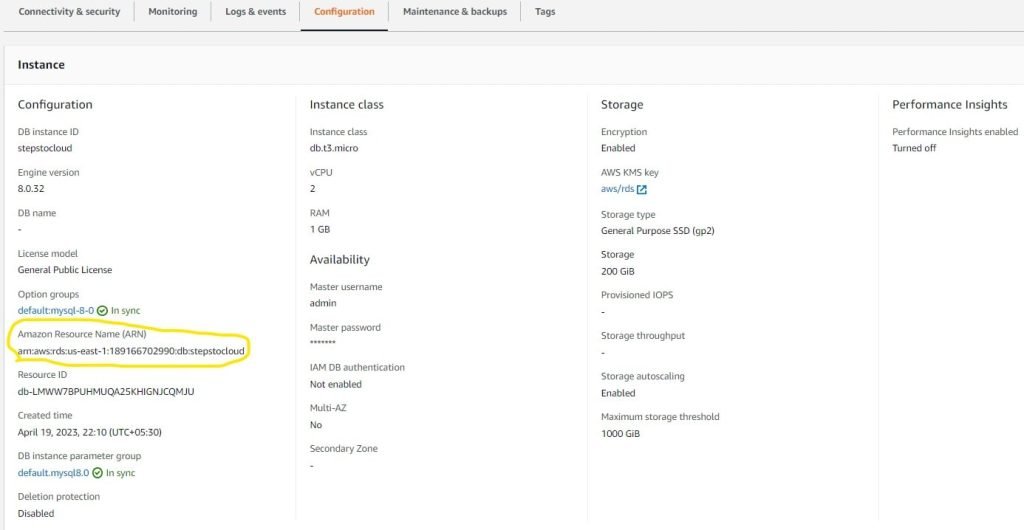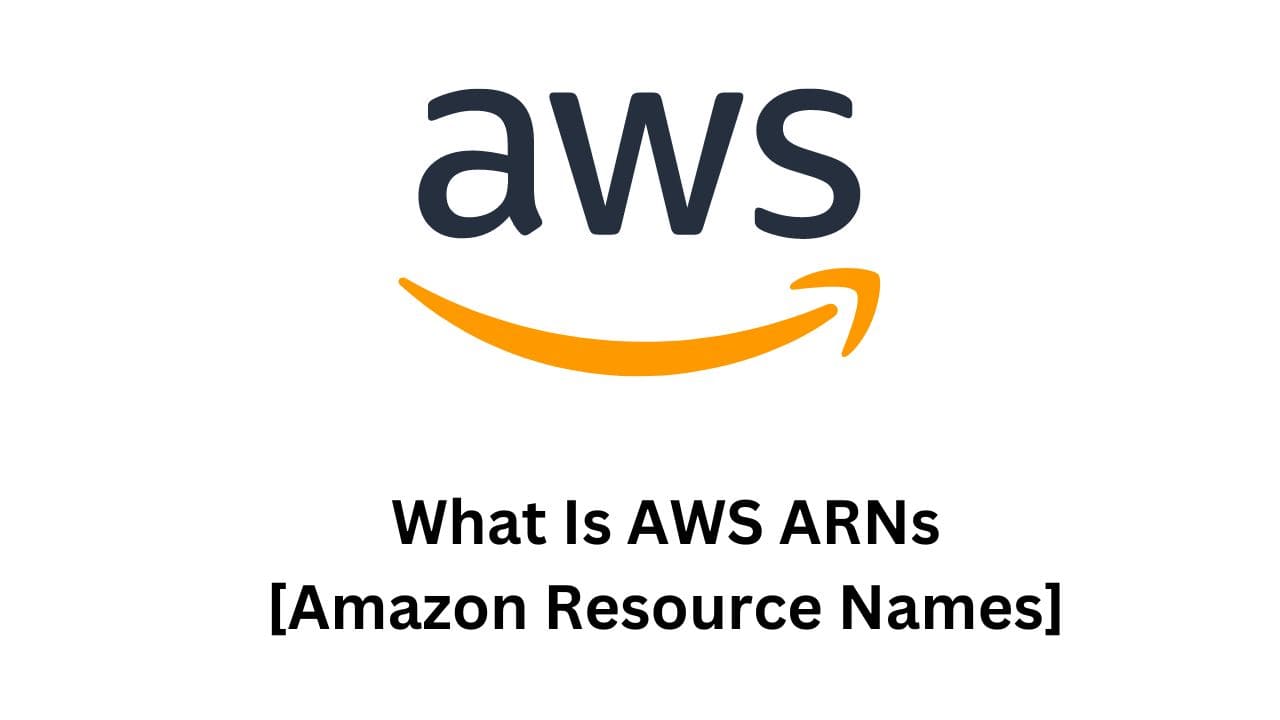Do you want to know what is AWS ARN? How does it work to locate and use AWS guidelines and items across all AWS environments to facilitate you? Read it here.
Organizations of all sizes, regions around the world, and sectors of the economy used cloud computing services.
They move their services and data swiftly on virtual clouds to increase security and profits and reduce their workload and expenses.
Cloud computing is securing their data and services and providing them with resources to improve the quality of their data and services and reduce risk in their operations.
To improve their data and locate their resources, AWS users must know what AWS ARN is.
It is used as a protocol to name a specific file in our public cloud utilized by Amazon Web Services to distinguish a particular specific resource.
Introduction to AWS Amazon Resource Names
Amazon Web Services provides this naming arrangement to improve your AWS resources management skills.
Administrators can use this protocol to locate and use their AWS resources and guidelines, among all the other available resources and API requests.
Amazon users can quickly secure and access their different AWS resources as no long-term guidelines are required to reach them.
It is conducive for AWS users to quickly identify a resource in Application interference requests, Amazon relational database tags, and IAM Policies throughout Amazon Web Services.
Benefits of Amazon Resource Names (ARN)
Following are some benefits of Amazon Resource Names:
1. AWS ARN’s Importance in Administrative Control
Administrators mainly apply ARNs to monitor and use AWS guidelines and facilities throughout every AWS Services and Application Programming interface request.
With superior security, they don’t require lengthy passwords to access their AWS services resources.
For example, if they want to access and load data from their own AWS S3 bucket to perform their required task, they can quickly use ARN to complete their task without wasting time.
When developers have to relate to a resource in documents, ARN might be helpful for them. It also helps to acquire assistance from the Amazon web services support staff.
2. AWS ARN’s Importance in Amazon Relational Database
For particular Amazon operations relevant to the Amazon relational database, users can only recognize resources by their Amazon Resource Names.
AWS RDS helps in configuring, running, and growing our relational database inside our data clouds and improves our data management skills. AWS ARN multiplies its efficiency and provides better results when used along with it.
3. AWS ARN’s Importance in Application Interferences Requests
APIs are the interaction between two programs and mostly on clouds; whenever every action is performed, we are conducting an API.
Most of these are performed between the internet server and applications.
AWS ARN facilitates their functions as it focuses on AWS users locating and functioning skills to use their resources; thus, API calls are quickly processed, resulting in improved efficiency.
In addition to API requests, they enhance automated text script generation to make our resources more efficient.
4. AWS ARN’s Importance in AWS IAM Policies
AWS Identity and Access Management rules rely primarily on ARNs. Users utilize them when they perform the basic security measures for AWS IAM policies and permissions.
In IAM Policies, they provide limited hierarchical resource access. AWS users also avail themselves of IAM permissions set up to restrict users in accessing specific resources rather than every resource to improve their system security and access.
5. AWS ARN’s Importance for Role-Based Authentication with Different Servers
AWS ARN helps to create role-based access with specific policies for other AWS users that require AWS access permissions from an Independent server. You can even limit their role to read-only instead of changing them.
It creates temporary credentials for AWS users using different servers for their short use and improves the security of our data stored in the central storage.
What is ARN Syntax, and How is the ARN Format Set?
They are namespaces. AWS users must enter a proper ARN Syntax to generate a useful ARN. The naming protocol also depends on the type of cloud in use.
Whenever ARN formatting takes place, AWS user’s account Identification, region of resource, resource types, and resource names are mentioned.
Partition and service are also used as the format of the ARN naming protocol, while slash or colon are used to highlight references.
We can easily format them unless the console is not set for any specific resource on a customized ARN. It can represent an EC2 server, EBS volumes, route tables, load balancers, an S3 bucket, and other resources.
Path Policies in AWS ARN
Amazon Resource Name is a phrase that distinguishes an Amazon Web Services resource, including storage objects, elastic cloud computing servers, users, application operations, and so on.
Anytime we want to define a resource precisely throughout all of Amazon’s web services, such as in IAM policies, we need to provide AWS an ARN.
We can allocate the path to any AWS IAM policies, users, or role leaders. It can also be assigned to AWS S3: Bucket or Folder structures. Introducing an AWS ARN wildcard character in the path gives access to all IAM users to connect with resources.
How do we get an ARN?
MySQL DB ARN
Step 1. For this, we created a MySQL DB as you can see below.

Step 2. Now below is the ARN of the DB instance that we just created.

S3 Bucket ARN
Step 1. Now we have created an S3 Bucket as below.

Step 2. Now below is the ARN of the S3 bucket that we created.

FAQS of What is AWS ARN
Q: How Can We Create AWS ARN?
Whenever you use AWS command-line interface OR Database Migration Application interference to move data, you create AWS ARN. ARN identifies each resource created in AWS.
Q: What Are The Significant Components Of The AWS ARN Format?
It contains the AWS user’s id, region, resource name, location, type, partition, and service.
Q: How Can We Access Our ARNs?
Using the Amazon management console, we can locate a resource and its ARN to find our resource details.
Final words:
If we want to improve our administrative control to locate and facilitate our resources, we must know what is AWS ARN.
Because it helps us in finding storage objects, elastic cloud computing servers, users, guidelines, application operations, and much more on AWS to improve our working experience.

I am an Amazon Web Services Professional, having more than 11 years of experience in AWS and other technologies. Extensively working in various AWS tools like S3, Lambda, API, Kinesis, Load Balancers, EKS, ECS, and many more. Working as a Solution Architect and Technology Lead for Architecting and implementing the same for different clients. He provides expert solutions around the world and especially in countries like the United States, Canada, United Kingdom, Australia, New Zealand, etc. Check out the complete profile on About us.

